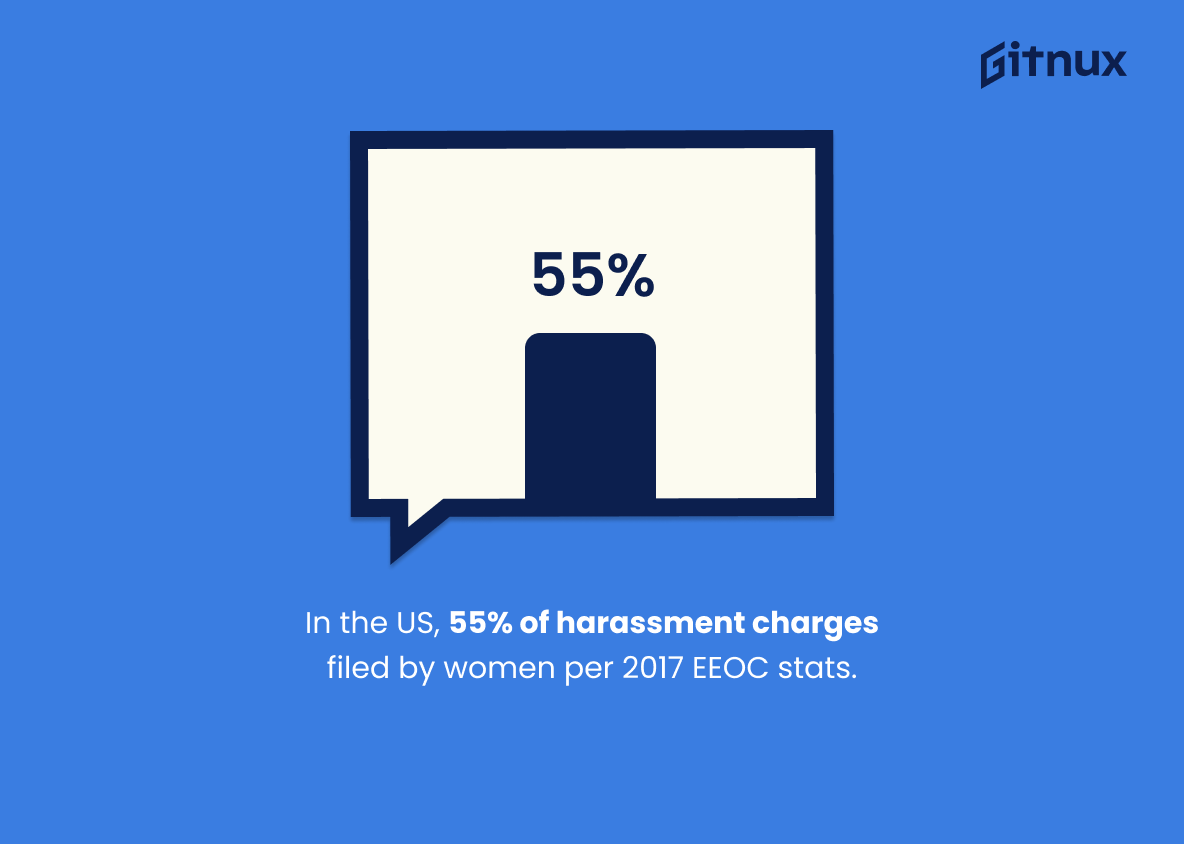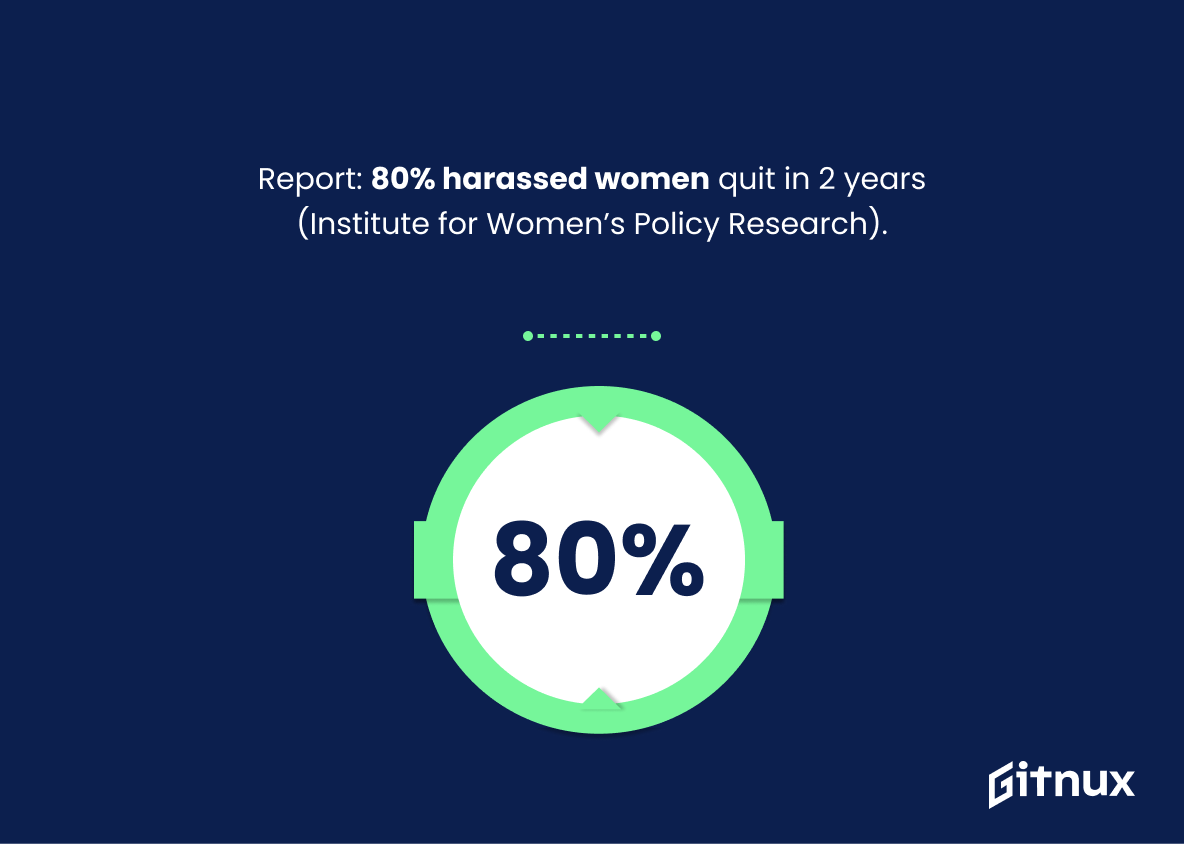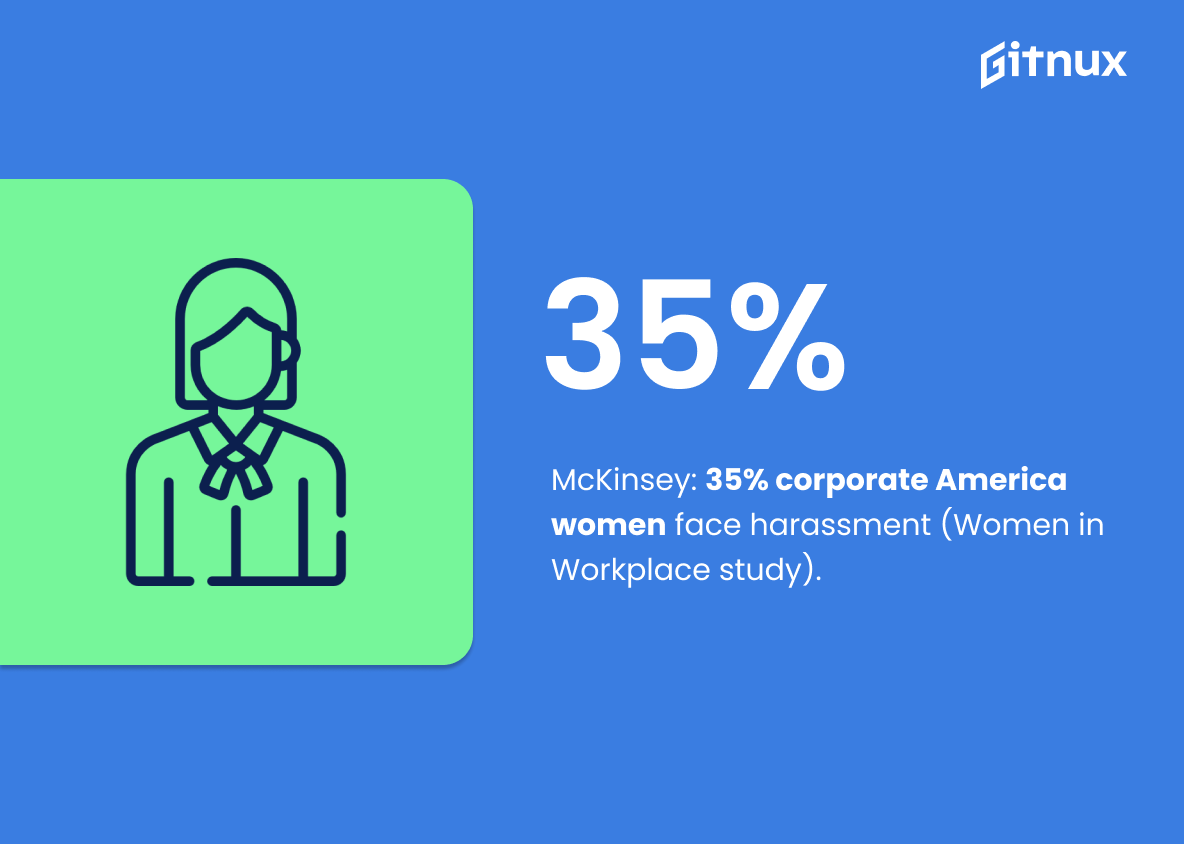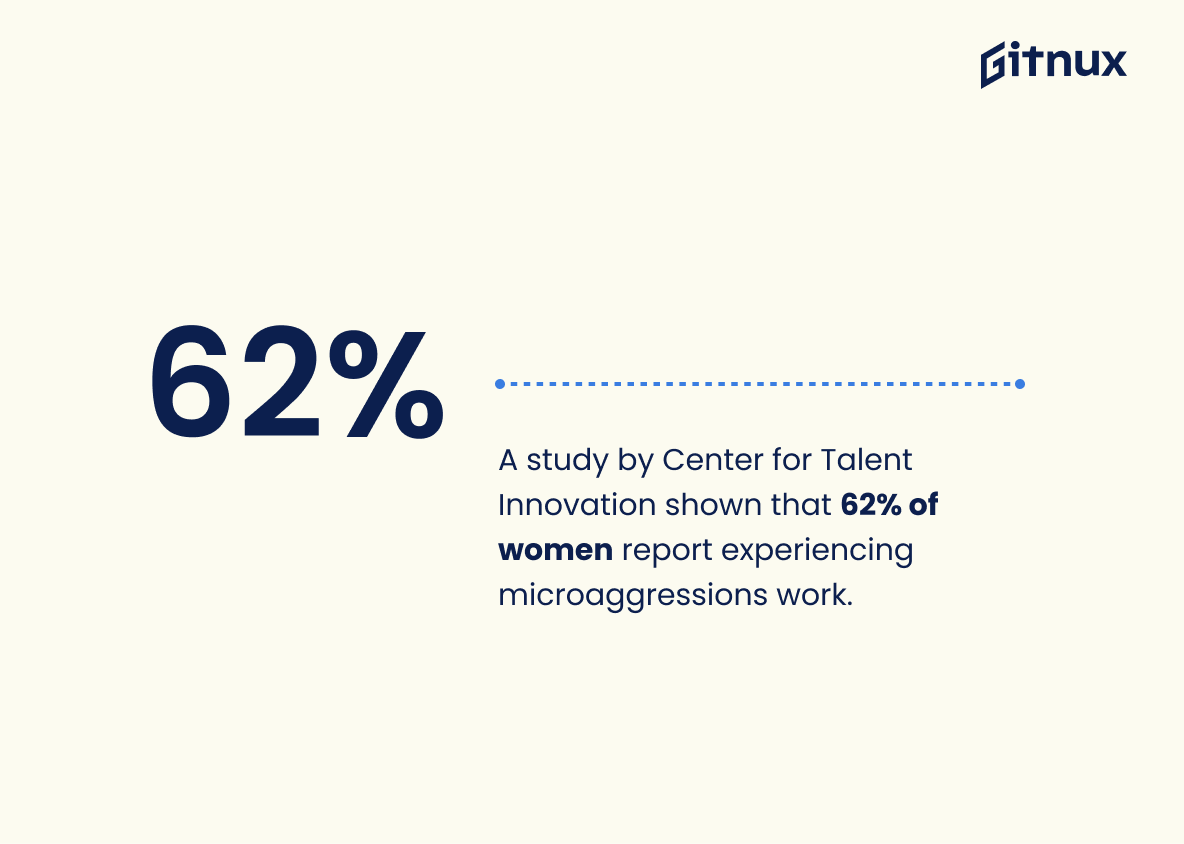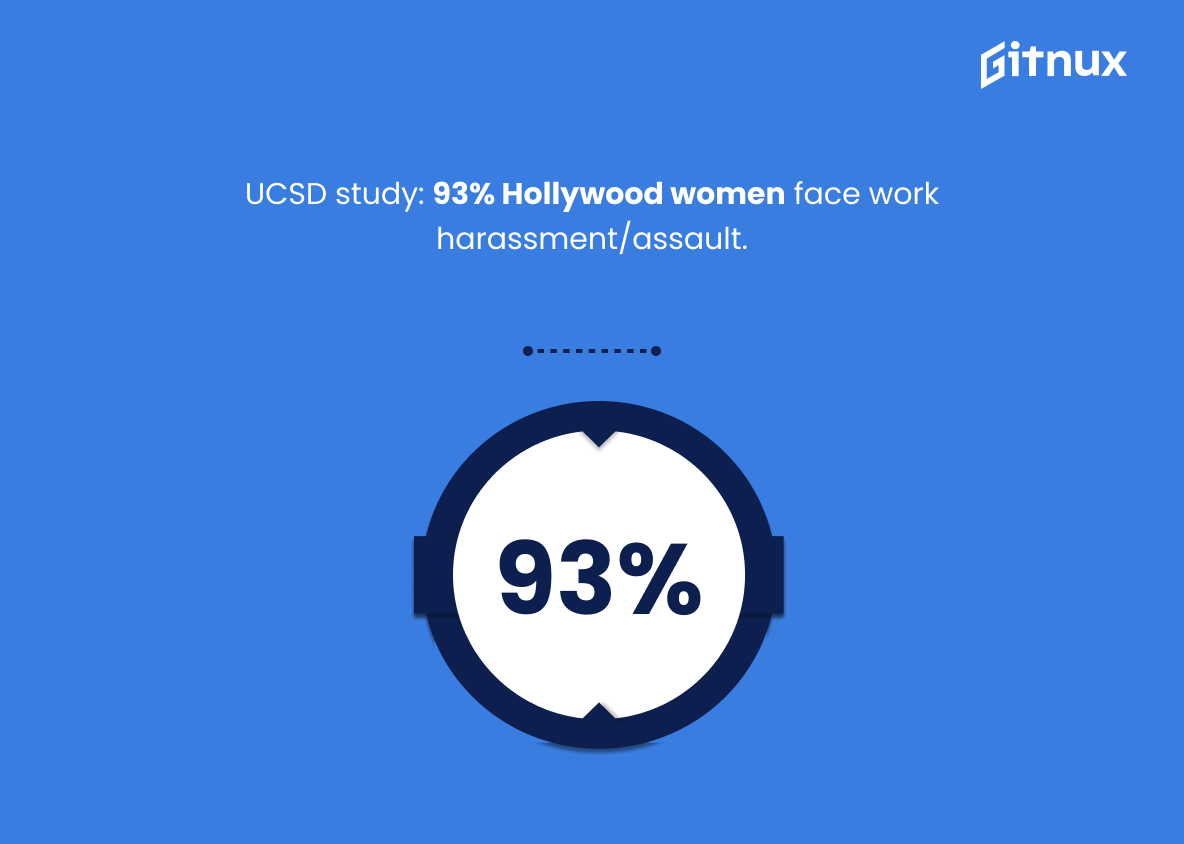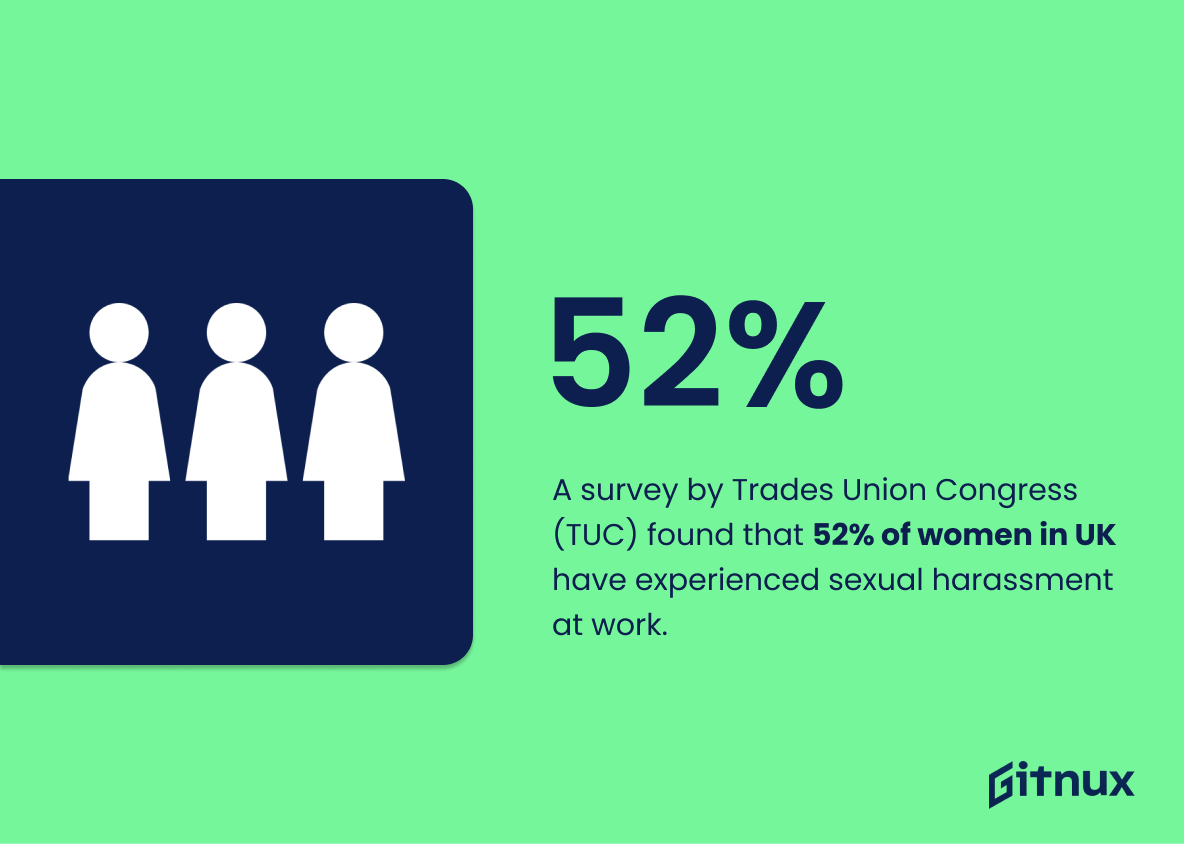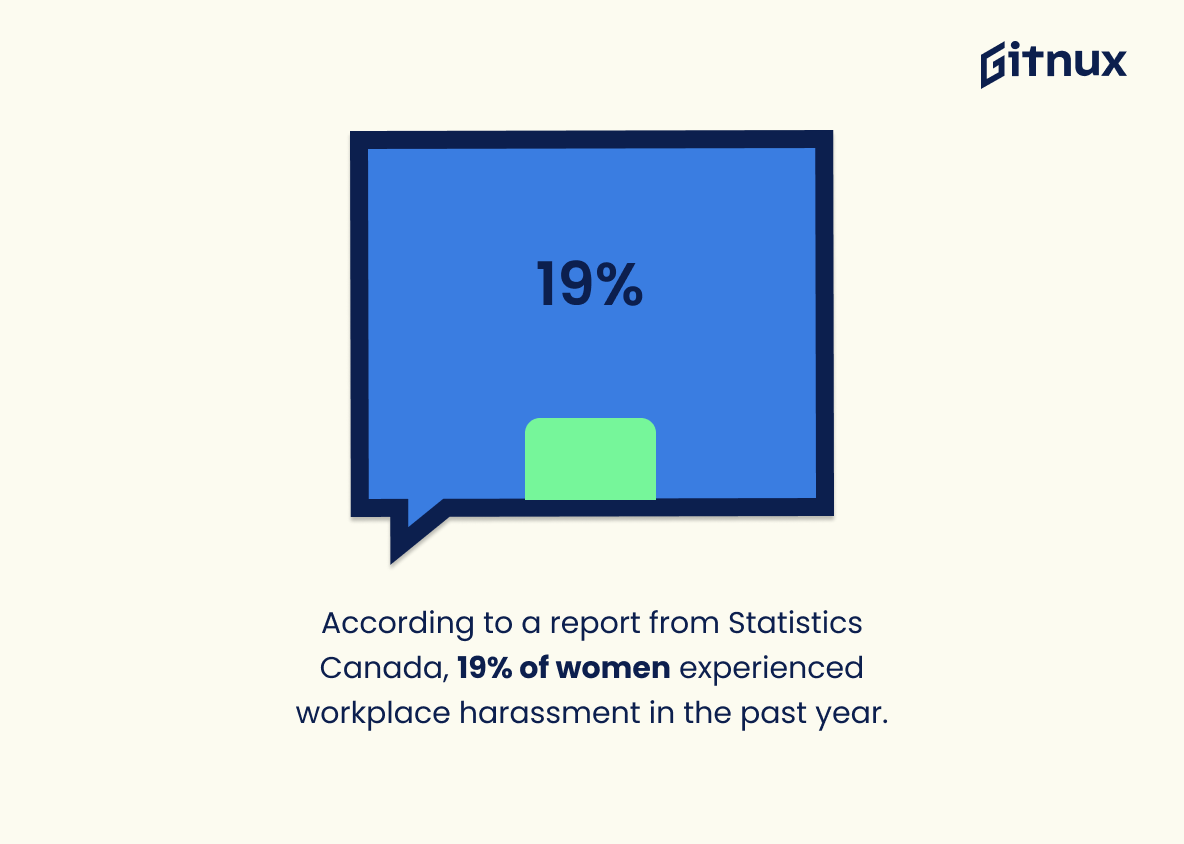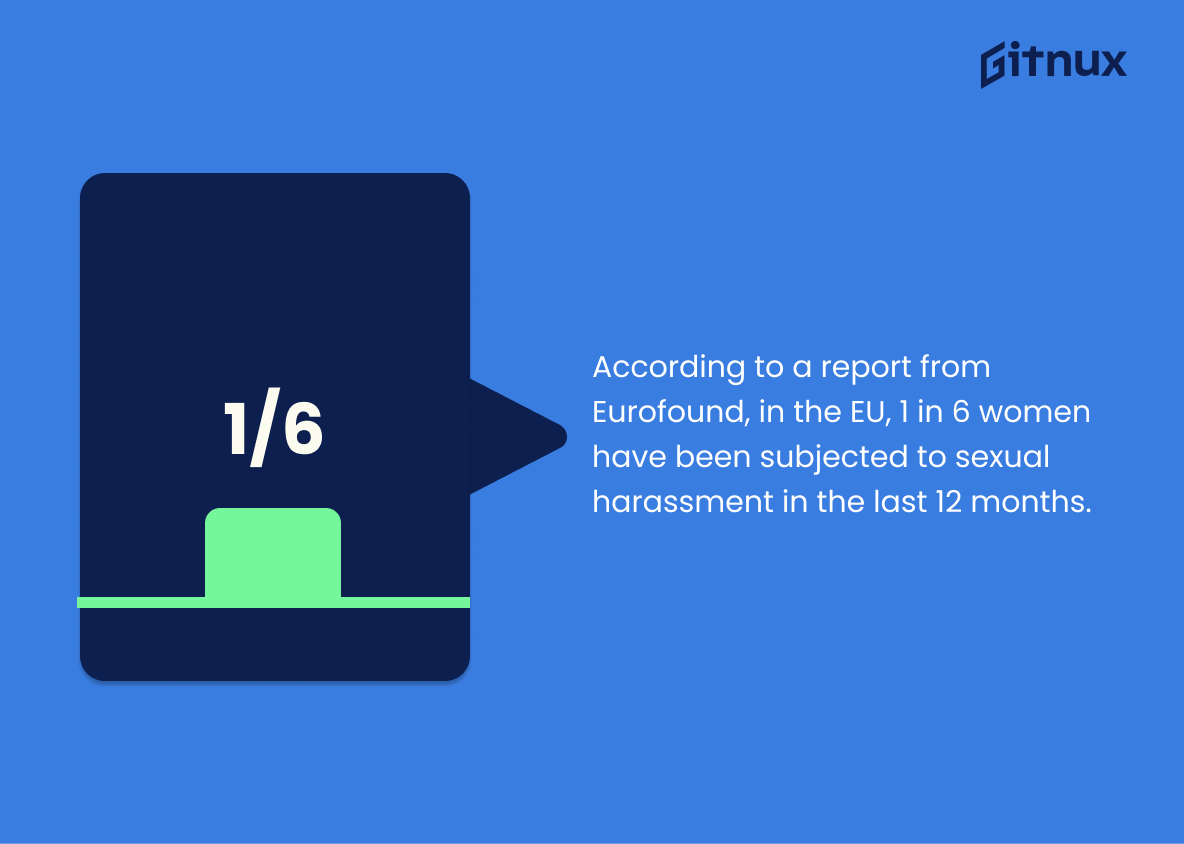In the dynamic landscape of today’s professional world, one would presume that gender equality is a universally embraced principle. Unfortunately, the harsh reality suggests otherwise; females continue to face persistent harassment in the workplace. This formidable issue remains a barrier to women’s progress, inhibiting their opportunities and dampening their potential.
This blog post aims to shed light on the disturbing statistics surrounding female harassment in the workplace, unwrapping this alarming issue that often lurks behind the doors of our corporate world. As we step into this exploration, it’s crucial to remember that these aren’t just numbers. They represent real women facing real challenges, making it all the more critical to delve into an effective dialogue about change.
The Latest Female Harassment In The Workplace Statistics Unveiled
According to a study by the National Women’s Law Center, as many as 85% of women reported experiencing sexual harassment at work.
Discovering that a study by the National Women’s Law Center reported an astonishing 85% of women experiencing sexual harassment at work, paints an alarming portrait of rampant workplace misconduct. These figures act as a shocking, yet vital, wake-up call to the ongoing severity and prevalence of female harassment within occupational environments.
Incorporating this statistic into our discussion illuminates the critical need for systemic change, instills a compelling urgency to rally for workplace transformation, and offers a backdrop against which we can gauge the effectiveness of interventions aimed to combat this pervasive issue.
In the US, 55% of sexual harassment charges were filed by women according to the U.S. Equal Employment Opportunity Commission’s 2017 statistics.
Peering into the revealing mirror of the U.S. Equal Employment Opportunity Commission’s 2017 statistics, the stark reflection of the often underreported issue of workplace sexual harassment becomes harder to ignore. Capturing a snapshot of this issue, the figure that 55% of sexual harassment charges in the US were lodged by women, exposes the pervasive nature of this scourge.
Within the landscape of a blog post devoted to Female Harassment in the Workplace Statistics, this statistic stands as a stark reminder of a significant disparity and the uphill battle many women face in professional environments. More profoundly, it paints an image of a silent epidemic urging societal and organizational intervention. Typically associated with the violation of one’s personal integrity and well-being, this statistic foregrounds an essential dialogue on equal rights, safety, and the necessity of fostering a safe work environment for all.
The Pew Research Center suggests that 22% of women have reported sexual harassment at work.
Featuring prominently in the blog post about Female Harassment in the Workplace Statistics, the data from Pew Research Center serves as a powerful revelation illuminating the magnitude of the issue – a disquieting 22% of women experiencing sexual harassment at work.
It amplifies the urgency and necessity of this discussion, presenting clear, quantitative evidence of the enormity and pervasive nature of this social malaise that has seeped into our workplaces. This figure helps us not only understand the pervasiveness of the problem, but also constructively aid in advocating for safer, more respectful work environments for women.
A YouGov survey cites that 30% of women who were sexually harassed did not report it because they feared repercussion on their jobs.
By shedding light on the chilling reality that 30% of women suffer in silence due to fear of job-related repercussion, the mentioned YouGov survey stat emphasizes how deeply coined harassment-related fears can be in the workplace environment. It provides a stark gaze into the intimidation and vulnerability women face, presenting a compelling narrative that fuels the urgency of addressing this issue.
Such a statistic forms a cornerstone of a blog post about Female Harassment in The Workplace Statistics, helping to instigate discussions about the safety of women at work, the pressing need for improved policies and procedures, and the development of a supportive reporting framework that promises security rather than reprisal.
According to a report from the Institute for Women’s Policy Research, 80% of women who have been harassed leave their jobs within two years.
Highlighting a potent statistic like “80% of women who have been harassed leave their jobs within two years”, elucidates the pressing issue of female harassment in the workplace. This disturbingly high rate encapsulates the gargantuan severity of the problem, giving the reader a quick, stark snapshot of the immersive and intolerable conditions women often endure – in turn, leading them to abandon their jobs rather promptly.
Painted vividly in numbers, this exodus following harassment unveils the traumatic aftermath and emphasizes the urgent need for comprehensive, stricter policies protecting women’s rights at work. Furthermore, it lays bare the tremendous loss of valuable talent businesses are succumbing to, as skilled and capable women are driven away. A powerful reminder, this statistic invokes introspection and propels the necessity for taking concerted actions against harassment.
The Women in the Workplace study by McKinsey & Co. shows that 35% of women in corporate America experience sexual harassment.
The gravity of the referenced statistic from the Women in the Workplace study by McKinsey & Co., which discloses that 35% of women in corporate America grapple with sexual harassment, cannot be overstated. Alluding to this statistic in a blog post about Female Harassment In The Workplace Statistics helps shed light on the pervasive nature of this distressing issue.
Indeed, when we bring attention to hard data showing that more than one-third of women are experiencing this dreadful reality, it has the power to shake complacency, spur dialogue, and incite action towards fostering a safer, more respectful workspace for women. Further, this statistic highlights the need for concerted efforts in tackling the roots of this societal malaise and reinforcing stringent anti-harassment policies. Such salient evidence underscores the urgency to not just acknowledge, but aggressively combat this insidious issue infiltrating corporate terrains.
According to a survey by ABC News–Washington Post, 33% of women have experienced sexual advances from male co-workers.
With an alarming one-third of women acknowledging unwarranted advances from male peers, this survey revelation by ABC News-Washington Post contributes a somber shade to our understanding of the workplace environment for women.
It serves as a stark reminder that harassment is still a considerable issue, pouring fuel onto the burning discussion of Female Harassment in the Workplace. Notably, it underlines the significance and urgency of continued discourse about appropriate behavior, the refinement of reporting mechanisms, and the promotion of a healthier work culture.
A study by Center for Talent Innovation shown that 62% of women report experiencing microaggressions or everyday discrimination at work.
Woven into the tapestry of the blog post about Female Harassment in the Workplace Statistics, the study by Center for Talent Innovation serves as a stark reminder, painting a vibrant picture of the pervasive issue of microaggressions faced by women. Casting a hard, 62% shadow on the ground that thousands of women traverse in their professional life, this statistic gives us a measuring stick against which we can gauge the subtle, yet insidious barriers that tighten the noose around gender equality.
It stands as a reflecting mirror to society, challenging the notion that harassment is always overt and indicating that discrimination shows up in less visible, yet equally impactful, everyday scenarios. Drawing attention to this statistic, therefore, helps us unpack the often overlooked forms of harassment and fortify our collective understanding and conversation around the culture of workplace inclusion and respect.
According to a study by University of Massachusetts Amherst, 58% of women in academic science fields experienced sexual harassment.
Shining a spotlight on the profound figure from the University of Massachusetts Amherst study, it unveils an alarming 58% of women in academic science fields having experienced sexual harassment. This statistic serves as a distressing revelation and a thick underline emphasizing the pervasiveness and potency of this issue within workplace environments.
Embodying more than mere numbers, it breathes life into the narratives of countless women, substantiating their experiences in a world that often underplays them. The magnitude of this statistic in a blog post about Female Harassment In The Workplace Statistics compels readers to confront the harsh reality, urging the need for change and reinstating the urgent call for effective policies and supportive structures to protect women in the workplace.
A University of California San Diego study revealed that 93% of women in the Hollywood industry experienced some form of sexual harassment or assault at work.
The revelation from the University of California San Diego research study, highlighting the alarmingly high percentage (93%) of women in the Hollywood industry who experience workplace sexual harassment or assault, presents more than just numbers. It paints a grim, yet tragically powerful, picture of the magnitude of the problem we face within the professional milieu.
This figure, chilling in its enormity, amplifies the urgency for changes in policies and social awareness within the industry and beyond. When discussing female harassment in the workplace, it serves as an unfortunate testament to the pervasive and systemic nature of the issue, undoubtedly strengthening the argument for appropriate actions and reforms to combat such behavior.
A survey by Trades Union Congress (TUC) found that 52% of women in UK have experienced sexual harassment at work.
Casting a stark light on the alarming reality, the staggering statistic ‘A survey by Trades Union Congress (TUC) found that 52% of women in UK have experienced sexual harassment at work’ serves as a potent reminder of the pervasive issue of workplace harassment. In a narrative tracing the Female Harassment In The Workplace Statistics, this figure, unfortunately, stands as an alarming testament to the prevalence of the issue we’re grappling with.
Juxtaposing our fight for gender equality with this statistic reminds us exactly why it’s necessary to press forward, initiating stringent preventative strategies to curb these numbers down, challenging societies and workplaces to redefine their standards of conduct. If this plight of 52% women doesn’t shake the societal consciousness awake, what truly will?
According to a report from Statistics Canada, 19% of women experienced workplace harassment in the past year.
Delving into this unsettling revelation from Statistics Canada, illuminating a stark reality faced by nearly one in five women encapsulates the need for immediate action and reform in workplace environments. This statistic exposes the huge iceberg lurking beneath the surface of professional dynamics, shedding light on an issue that’s often hidden or ignored.
This data point plays a crucial role in our discussion, serving as undeniable proof of the widespread prevalence of workplace harassment faced by women. Consequently, it bolsters the urgency and significance of the blog post, striking a chord with readers about the plight of these affected women, thus amplifying the call for progressive, tangible change.
A study from the Australian Human Rights Commission found that 39% of women have experienced sexual harassment at work in the last five years.
In the pulsating heart of a blog post dedicated to Female Harassment in the Workplace Statistics, the statistic from the Australian Human Rights Commission forms a scorching revelation. It starkly manifests that the stain of sexual harassment is pervasive, poisoning nearly two in five professional environments for women in the span of just five years. This statistic, like a cautionary beacon, vociferously demands immediate attention and underscores the urgency of empowering preventative actions.
Furthermore, it fosters a deeper understanding of the gravity of the global issue, furnishing quantifiable evidence to incite meaningful dialogues, crucial policy changes, and effective solutions. This factual testament to the adversity women face accentuates the pressing need for change, not tomorrow, but today – in every workplace, for every woman.
According to a report from Eurofound, in the EU, 1 in 6 women have been subjected to sexual harassment in the last 12 months.
In a blog post delving into the sobering realities of female harassment in the workplace, referencing the statistic from Eurofound offers a stark perspective. Regularly taking a moment to pull the curtain on an all too often normalized culture of misogyny, this stat underscores the urgency of this pervasive issue.
It’s not an abstract or distant problem, but an everyday reality for one in six women in the EU. Through the lens of these numbers, the magnitude of misconduct women confront at work becomes alarmingly clear. More than a mere statistic, it’s a wake-up call and a catalyst for rigorous introspection and deliberate action towards change.
Conclusion
The statistics surrounding female harassment in the workplace clearly portray a bleak reality, an issue that requires immediate and substantial attention from all levels of society. It has immense implications not just for the individuals affected, but for business productivity and societal growth at large. This grave problem breaks down barriers of trust, respect, and equality at the workplace, and hampers the evolution of a healthy work environment.
In a world that is marching steadily towards gender equality, it is essential that businesses, leaders, institutions, and individuals come together to eliminate this culture of harassment. We all need to understand, now more than ever, that apart from legislation and policies, it is our collective responsibility and attitude towards gender equality that can truly change the narrative.
References
0. – https://www.www.tuc.org.uk
1. – https://www.today.yougov.com
2. – https://www.womenintheworkplace.com
3. – https://www.www.pewresearch.org
4. – https://www.www.eeoc.gov
5. – https://www.www.umass.edu
6. – https://www.abcnews.go.com
7. – https://www.www.talentinnovation.org
8. – https://www.timesofsandiego.com
9. – https://www.iwpr.org
10. – https://www.nwlc.org
11. – https://www.www150.statcan.gc.ca
12. – https://www.www.eurofound.europa.eu
13. – https://www.humanrights.gov.au

